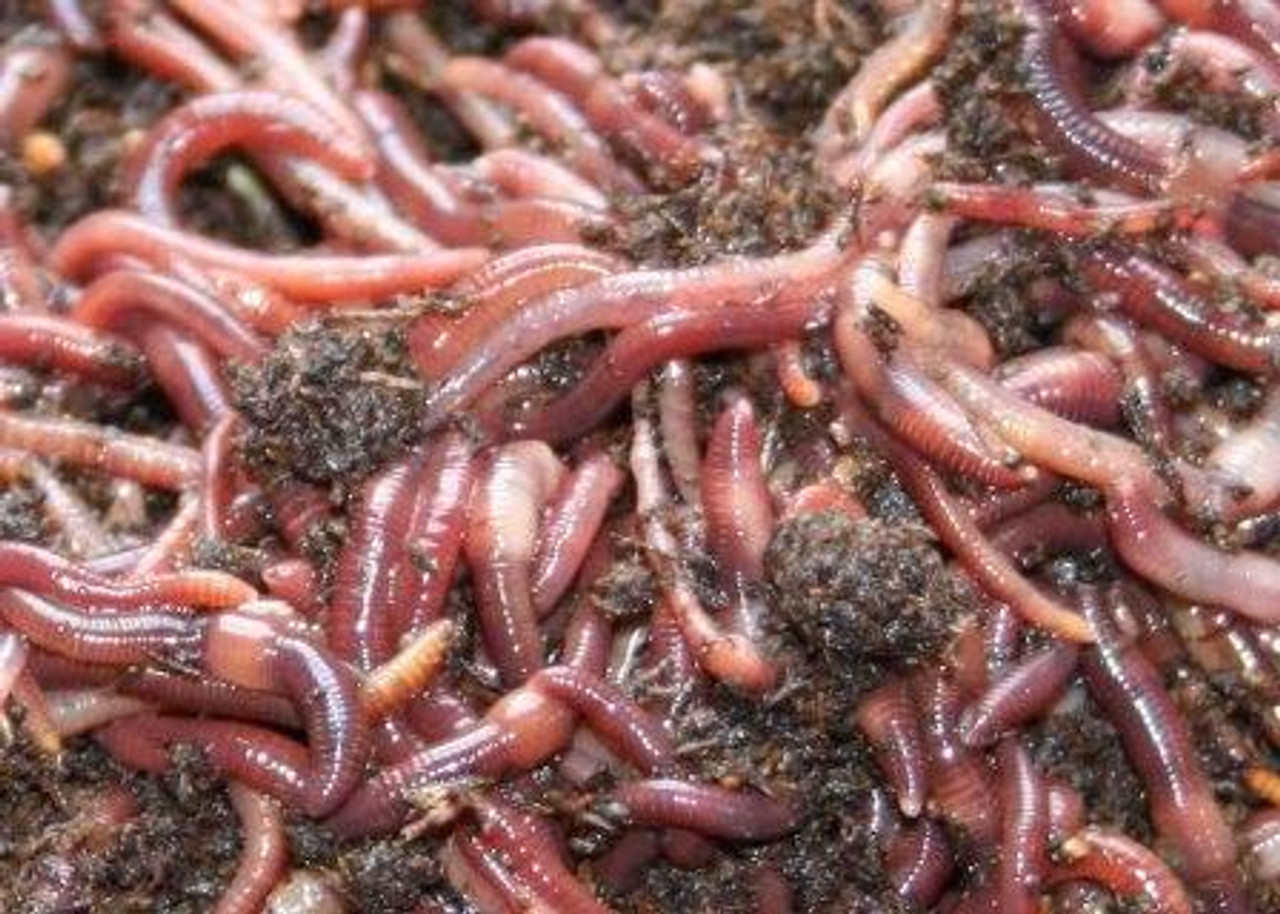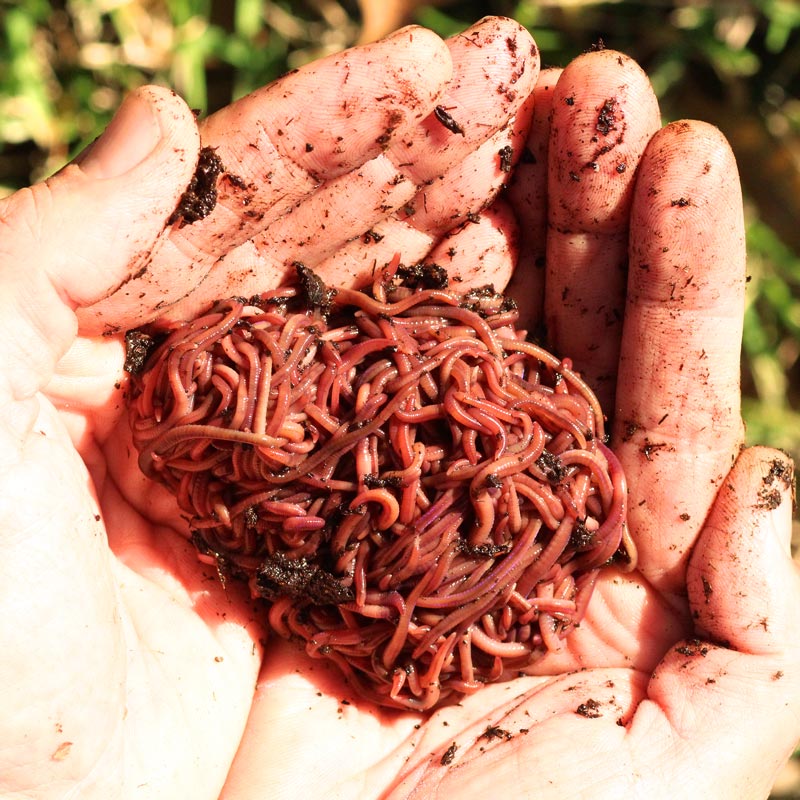The Extraordinary Globe of Red Wigglers: Boost Your Dirt Fertility Today
These little yet reliable microorganisms transform natural waste right into useful worm spreadings, considerably improving dirt health and wellness and advertising lasting methods. As we discover the benefits of vermicomposting and the sensible steps to produce a reliable worm container, the potential impact of these worms on your horticulture success becomes increasingly evident.
Recognizing Red Wigglers
Red wigglers, scientifically referred to as Eisenia fetida, are a species of earthworm that play a crucial role in enhancing dirt fertility. These worms prosper in organic-rich settings, such as compost heap and decaying plant material, where they consume natural waste and excrete nutrient-dense spreadings. Their distinct anatomy, including a segmented body and a clitellum, allows them to replicate rapidly and effectively procedure large amounts of organic matter.

The environmental value of red wigglers expands past simple waste handling; they add to the dirt food internet, promoting a diverse community of microorganisms that further boost soil wellness. Understanding the biology and behavior of red wigglers is vital for utilizing their full potential in sustainable agriculture and gardening methods.
Advantages of Vermicomposting
(Red Wiggler Express)Harnessing the power of red wigglers with vermicomposting deals various benefits that significantly boost soil health and fertility. Among the main benefits is the manufacturing of nutrient-rich worm spreadings, which are an outstanding natural plant food. Red Wiggler Express. These spreadings have essential nutrients like nitrogen, phosphorus, and potassium, promoting durable plant development and improving plant returns
In addition, vermicomposting enhances soil framework and oygenation. The visibility of worm spreadings boosts dirt texture, permitting for far better water retention and drain. This balanced wetness level is vital for origin advancement and the general health of plants. Furthermore, red wigglers aid break down raw material, increasing decay and recycling nutrients back into the soil.
Vermicomposting likewise fosters microbial task, which is important for a healthy and balanced soil environment. Beneficial bacteria grow in the presence of worm spreadings, helping in the break down of natural materials and enhancing nutrient availability to plants.
Lastly, vermicomposting serves as an effective waste management solution, decreasing land fill waste by reusing cooking area scraps and other natural products. This not only contributes to environmental sustainability yet also promotes a round economic climate within gardening see this site and farming.
Exactly How to Set Up a Worm Bin
Establishing up a worm container is a simple process that can substantially enhance your composting efforts. Begin by selecting a proper container, which can vary from a commercially available worm bin to a basic plastic or wooden box (Red Wiggler Express). Ensure the container has sufficient ventilation; tiny openings in the lid and sides will help with air circulation
Next, produce a bed linens layer to provide a comfy setting for the red wigglers. This can be made from shredded paper, cardboard, or coconut coir, moistened to a wet, sponge-like consistency. Fill up the container to around one-third full with this bed linen product.
Once the bedding is prepared, it's time to present the worms. Red wigglers thrive in organic waste, so area them gently onto the bed linens. Cover the worms with a light layer of extra bedding to help them accommodate.
Feeding Your Red Wigglers
Supplying the ideal food for your red wigglers is vital for their health and the performance of your composting system. Red wigglers grow on a diverse diet regimen, mostly including organic materials such as fruit and vegetable scraps, coffee grounds, and shredded paper. These materials not just give important nutrients yet also add to the microbial activity in the worm container, which is essential for the worms' food digestion.
It is necessary to stay clear of certain foods, such as milk products, oils, and meats, as these can bring in pests and create unpleasant odors. Additionally, citrus peels and overly zesty foods must be limited because of their potential to harm the worms. A well balanced strategy to feeding involves keeping track of the quantity of food presented to the container, guaranteeing that it is taken in within a practical time structure to stop excess waste buildup.
To advertise optimal digestion, it is advantageous to slice or shred larger food items before including them to the container. This practice enhances the surface for microbial action, helping with quicker decay and improving the general performance of your composting system. Frequently observing the worms' feeding practices will aid you adjust their diet plan as required.
Making Use Of Worm Castings in Your Garden

(Red Wiggler Express)Integrating worm castings into your garden can be accomplished by mixing them right into the dirt or using them as a leading clothing. The slow-release nature of these castings guarantees that nutrients are offered to plants over an extensive duration, decreasing the demand for artificial plant foods. In addition, worm spreadings contain advantageous microbes that promote healthy dirt ecosystems, enhancing the overall resilience of your yard.
To maximize the advantages, aim to use around one component worm spreadings to three components soil in your planting beds. Normal applications can bring about enhanced plant returns and much healthier plants, making worm spreadings a very useful resource for both newbie and seasoned gardeners alike. By using this natural change, you can cultivate a successful yard while contributing to sustainable gardening methods.
Verdict
In final thought, red wigglers exhibit the essential duty of vermicomposting in improving dirt fertility. Their capability to convert organic waste right into nutrient-rich castings significantly enriches dirt framework and sustains microbial variety.